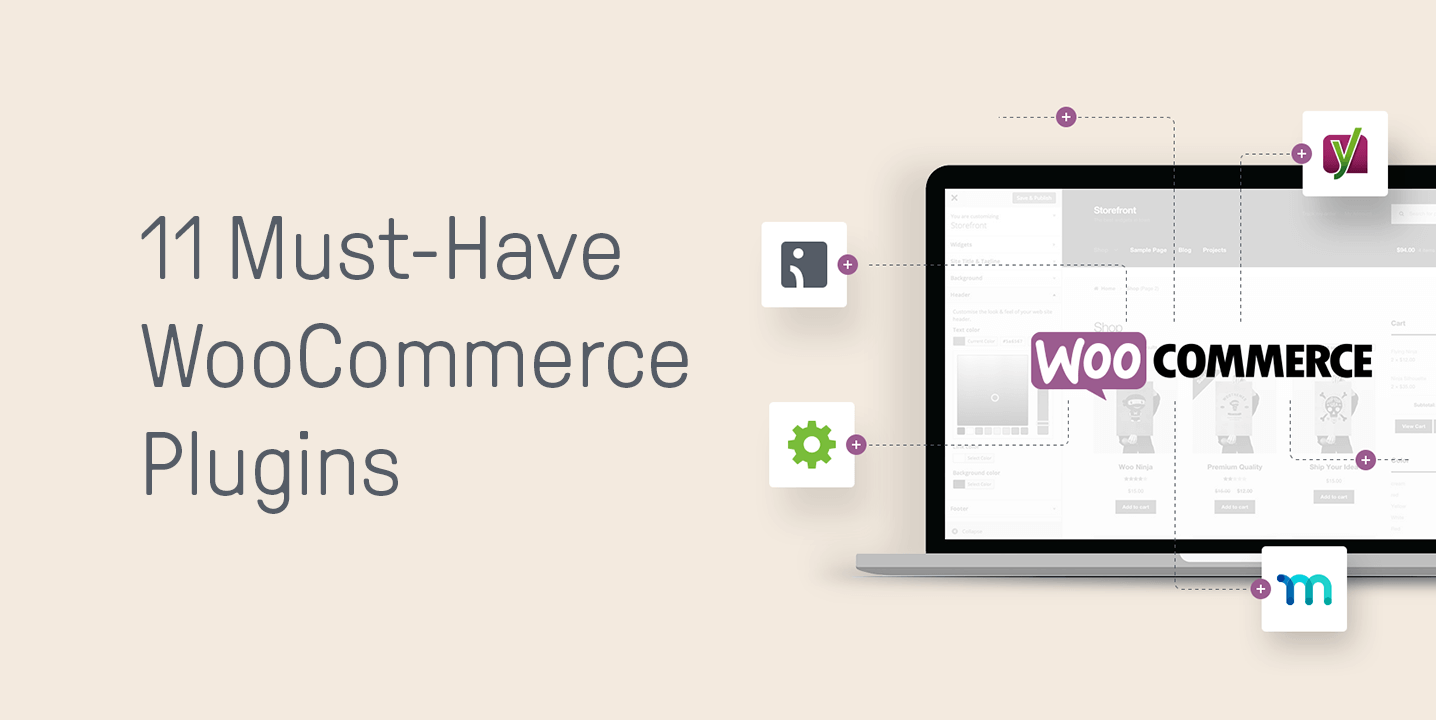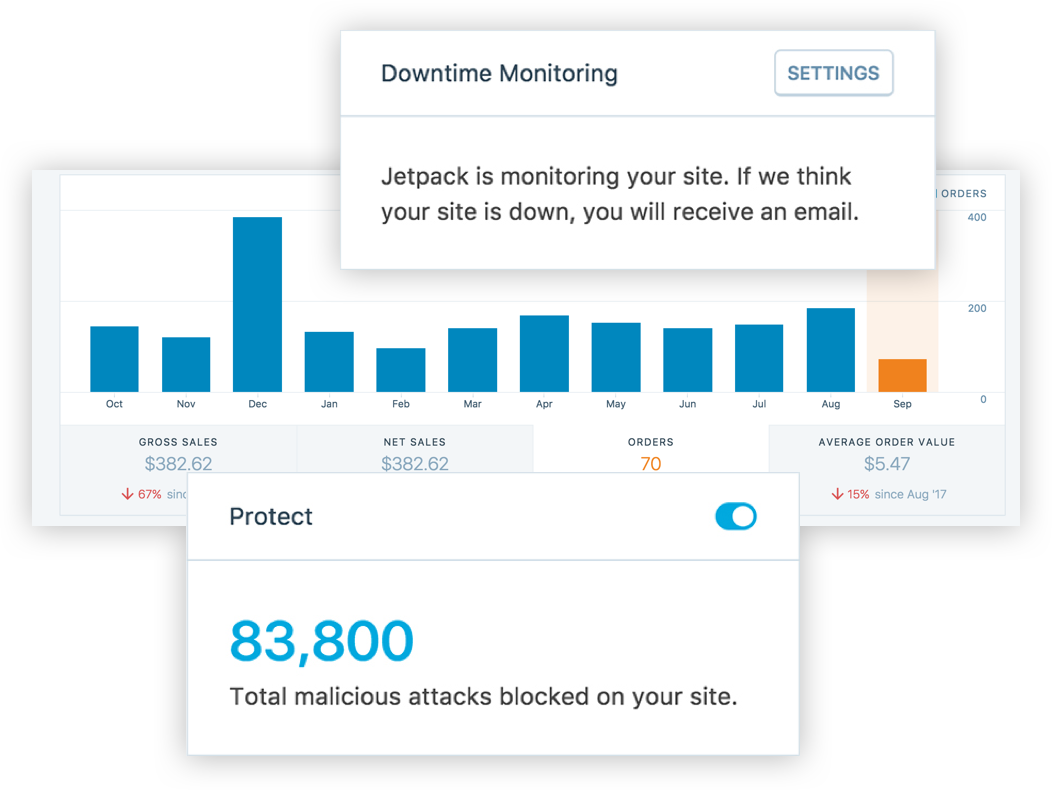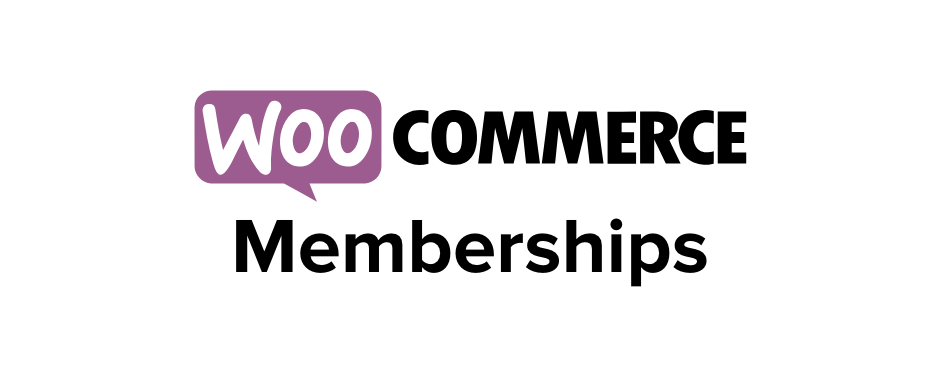| Original author(s) | Mike Jolley, James Koster |
|---|---|
| Developer(s) | Automattic |
| Initial release | 2011[1] |
| Stable release | 5.1.0 (March 9, 2021; 45 days ago[2]) [±] |
| Repository | |
| Written in | PHP |
| Operating system | Unix-like, Windows |
| Type | e-commerce |
| License | GPL |
| Website | woocommerce.com |
WooCommerce is an open-sourcee-commerceplugin for WordPress. It is designed for small to large-sized online merchants using WordPress. Launched on September 27, 2011,[3] the plugin quickly became popular for its simplicity to install and customize and free base product.
History[edit]
WooCommerce was first developed by WordPress theme developer WooThemes,[4] who hired Mike Jolley and James Koster, developers at Jigowatt, to work on a fork of Jigoshop[5][6] that became WooCommerce.[7] In January 2020, it was estimated that WooCommerce is used by around 3.9 million websites.[8]
In November 2014, the first WooConf, a conference focusing on eCommerce using WooCommerce was held in San Francisco, California. It attracted 300 attendees.[9]
- Welcome to the future of WooCommerce Premium plugins that work together and bring awesomeness to any store! XforWooCommerce is a plugin for WooCommerce. It has many modules that work together in your Store. These add-on options, settings and functions are uniform and shared between modules. Tasks perform quicker, jobs are done easier and your customers feel the difference.
- Transform your WordPress website into a thoroughbred eCommerce store. Delivering enterprise-level quality and features while backed by a name you can trust. Say 'hello' to the WooCommerce eCommerce plugin.
SkyVerge is the leading partner developer for WooCommerce.com, with over 50 premium WooCommerce extensions available for sale. We're also one of the top third-party contributors to WooCommerce core, with almost 400 contributions from our team. View WooCommerce extensions →.

In May 2015, WooThemes and WooCommerce were acquired by Automattic, operator of WordPress.com and core contributor to the WordPress software.[10]
In December 2020, WooCommerce acquired MailPoet, a popular WordPress newsletter management plugin.[11]
Usage[edit]
WooCommerce is used by a number of high-traffic websites such as Small Press Expo.[12]For the 3rd week of September 2015, Trends indicated that WooCommerce ran on 30%[13] of e-commerce sites and millions of active installs.[14] Ecommerce is rapidly growing worldwide and WooCommerce has over 39 million downloads as a plugin and is currently active on more than three million websites and is the most popular eCommerce platform in 2018.[15] WooCommerce serves approximately 4% of the top million HTML pages.[16] In 2015, statistics show that the percentage of online stores that utilize WooCommerce through Wordpress.org's plugin is more than 30% of all stores.[17] The current 2019 market share for WooCommerce is 22% of the top 1 million sites using eCommerce technologies.[18]
Since Automattic's acquisition WooCommerce has kept gaining market share to become one of the leading E-commerce platforms on the Internet.[19]
Themes[edit]
With many WooCommerce-ready themes sold on third party websites it makes it difficult to exactly estimate how many themes can be associated with this WordPress plugin, but here are some WooCommerce stats for the bigger theme providers.[20]
- There are 1,135 WooCommerce themes on ThemeForest.[21]
- The WordPress.org theme directory has 548 WooCommerce themes.
Extensions[edit]
WooCommerce has attracted significant popularity because the base product, in addition to many extensions and plugins, is free and open-source. WooCommerce has hundreds of extensions and over 1,000 plugins.[22] In addition, there are thousands of paid add-ons for fixed prices. Many Premium Themes now offer capability with WooCommerce as well as plugins that make a theme framework compatible.[23]
Notable WooCommerce extensions include:
- WooCommerce Bookings: Which allows users to sell blocks of time as appointments.[24]
- WooCommerce Memberships: which allows the user to restrict access to certain parts of their WordPress website, and sell access to these parts of the website.[25]
WooExpert Partner program[edit]
Instead of a certification program WooCommerce uses an official partnership program. WooCommerce recommends users to use these WooExperts for their WooCommerce projects.[26] Suppliers can apply to become a partner and by doing so will undergo a multi-stage application process that includes skill evaluation and an interview. Throughout the process WooCommerce aim to assess familiarity with WooCommerce core and extensions. The partnership program had either a Gold, Silver or Bronze level[27] until late 2017, when it moved to a flat 'verified WooExpert' system.[28]
Revenues[edit]

A study conducted in 2017 by Todd Wilkins, Head of WooCommerce, suggests that WooCommerce stores would collectively account for nearly $10 billion in sales.[29]
See also[edit]
References[edit]
- ^'WooCommerce Has Arrived'. WooCommerce. 27 September 2011. Retrieved 17 January 2015.
- ^'WooCommerce - excelling eCommerce'. WordPress. Retrieved November 27, 2019.
- ^Perez, Sarah (27 September 2011). 'WooThemes Launches WooCommerce To Turn WordPress Sites Into Online Shops'. TechCrunch. Retrieved 17 January 2015.
- ^'WordPress Themes, Plugins & eCommerce'. WooThemes.
- ^Imel, Ryan (28 August 2011). 'Jigoshop team and WordPress community members share thoughts on forking'. WPCandy. Retrieved 17 January 2015.
- ^'Our forking views'. Jigoshop. 26 August 2011. Retrieved 17 January 2015.
- ^Imel, Ryan (25 August 2011). 'WooThemes forks Jigoshop into WooCommerce, launches WooLabs'. WPCandy. Retrieved 17 January 2015.
- ^Hyde, Ethan. 'WooCommerce Vs Shopify'. More Leads More Revenue.
- ^'Dedicated to store owners & WordPress developers wanting to learn the art of eCommerce using WooCommerce'. Wooconf. November 2014. Retrieved 5 October 2017.[non-primary source needed]
- ^'WordPress Parent Automattic Buys WooCommerce, a Shopping Tool for Web Publishers'. Re/code. 2015-05-19. Retrieved 19 May 2015.
- ^'MailPoet Joins WooCommerce'. MailPoet Blog. 2020-12-07. Retrieved 7 December 2020.
- ^'WooCommerce E-Commerce Usage'. WebTechster. Retrieved 2014-05-13.
- ^'Statistics for websites using Ecommerce technologies (The Entire Internet Tab)'. builtwith.com. Retrieved 21 September 2015.
- ^Warnimont, Joe (14 February 2018). 'WooCommerce Review: The King of Ecommerce Plugins on WordPress'. Ecommerce Platforms. Retrieved 30 April 2018.
- ^'How Many Websites Use WooCommerce? Usage Stats 2019'. Barn2 Media. 2019-02-11. Retrieved 2019-06-13.
- ^'How Many Websites Use WooCommerce? Usage Stats 2019'. Barn2 Media. 2019-02-14. Retrieved 2019-06-13.
- ^'How Many Websites Use WooCommerce? Usage Stats 2019'. Barn2 Media. 2019-02-14. Retrieved 2019-06-13.
- ^'How Many Websites Use WooCommerce? Usage Stats 2019'. Barn2 Media. 2019-02-14. Retrieved 2019-06-13.
- ^'WooCommerce keeps gaining Market Share'. ProWoos. Retrieved 16 August 2018.
- ^'WooCommerce Stats 2018: How Many Websites Use WooCommerce?'. Barn2 Media. 2018-02-13. Retrieved 2018-09-15.
- ^'WooCommerce Stats 2018: How Many Websites Use WooCommerce?'. Barn2 Media. 2018-02-13. Retrieved 2018-09-15.
- ^'[Infographic] 2017 WooCommerce Statistics'. Holler Box. 2017-08-01. Retrieved 2018-09-15.
- ^'WooCommerce Genesis Framework for WooCommerce'.
- ^'WordPress Parent Automattic Buys WooCommerce, a Shopping Tool for Web Publishers'. Recode. Retrieved 30 April 2018.
- ^'Easy Membership Sites With WooCommerce Memberships - Patrick's Programming Blog'. Patrick's Programming Blog. 1 November 2016. Retrieved 30 April 2018.
- ^'WooExperts - WooCommerce'. WooCommerce. Retrieved 2017-09-03.
- ^'Becoming a WooExpert - WooCommerce'. WooCommerce. Retrieved 2017-09-03.
- ^Scott, Robin (2017-12-02). 'WooCommerce Ends Gold Silver, Bronze – Just WooExperts'. Silicon Dales. Silicon Dales Ltd. Retrieved 6 February 2018.
- ^'WooCommerce Stores on Track to Surpass $10B in Sales This Year'. WordPress Tavern. 2017-10-19. Retrieved 2018-09-15.
External links[edit]
What are Webhooks? ↑ Back to top
A Webhook is an event notification sent to a URL of your choice. Users can configure them to trigger events on one site to invoke behavior on another.
Webhooks are useful for integrating with third-party services and other external API that support them.
Webhooks in WooCommerce ↑ Back to top
Webhooks were introduced in WooCommerce 2.2 and can trigger events each time you add, edit or delete orders, products, coupons or customers.
It’s also possible to use webhooks with WooCommerce actions, e.g., Create a webhook to be used every time a product is added to the shopping cart, using the action woocommerce_add_to_cart.
Webhooks also make it easier for third-party apps to integrate with WooCommerce.
Creating webhooks ↑ Back to top
To create a new webhook:

1/ Go to: WooCommerce > Settings > Advanced > Webhooks.
Note: Webhooks were formerly found under WooCommerce > Settings > API prior to WooCommerce 3.4.
2/ Select Create a new webhook (first incident) or Add webhook. The Webhook Data box appears.
Woocommerce.com
3/ Enter.
- Name: The name is auto-generated as “Webhook created on [date and time of creation]” as a standard to facilitate creation. Change the name to something else.
- Status: Set to Active (delivers payload), Paused (does not deliver), or Disabled (does not deliver due delivery failures).
- Topic: Indicate when the webhook should be triggered – Order Created, Product Deleted, or Customer Updated. There are also Action and Custom options.
- Action Event: This option is available when the Topic is a WooCommerce Action, such as
woocommerce_add_to_cartfor when customers add products to the shopping cart. - Custom Topic: This option is for advanced users only. It’s possible to introduce new, customized topics with the help of
woocommerce_webhook_topic_hooksfilter.
- Action Event: This option is available when the Topic is a WooCommerce Action, such as
- Delivery URL: URL where the webhook payload is delivered.
- Secret: The Secret Key generates a hash of the delivered webhook and is provided in the request headers. This defaults to the current API user’s consumer secret, if nothing is entered.

Woocommerce Demo
4/ Save Webhook.
Editing and deleting webhooks ↑ Back to top
Webhooks are listed the same way as posts or products.
- Find the webhook you wish to alter.
- Hover over the name, and Edit and Delete permanently options appear.
- Delete, or make Edits and Save changes. Bulk deletion is also possible with the dropdown.
Woocommerce Plugin
Webhook logs ↑ Back to top
WooCommerce saves logs of all events triggering a webhook. Webhook logs are found at: WooCommerce > Status > Logs.
Logs may be reviewed to see delivery and response from the server, making it simpler to integrate and debug.

